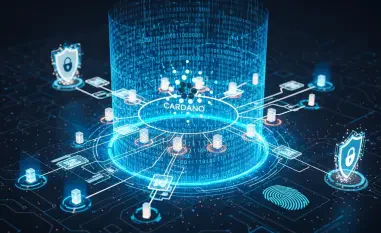Understanding Cybersecurity Burnout: Scope and Significance
In an era where digital threats loom larger than ever, the cybersecurity industry stands as the backbone of global digital infrastructure, safeguarding everything from personal data to critical national systems. With cyberattacks growing in sophistication—think ransomware crippling hospitals or data breaches exposing millions of records—the role of cybersecurity professionals has never been more vital. Yet, beneath this critical mission lies a silent crisis: burnout, a pervasive issue threatening the very defenders of the digital realm.
This burnout manifests as both a personal and professional toll, fueled by high-pressure environments where the stakes are sky-high and workloads are unrelenting. Professionals often face sleepless nights, constant alerts, and the weight of knowing a single misstep could lead to catastrophic breaches. The mental and emotional strain is palpable, leading to high turnover rates and diminished effectiveness, which in turn jeopardizes organizational security.
The industry itself spans a vast landscape, encompassing segments like threat intelligence, AI-driven security, and cloud protection, with major players such as Palo Alto Networks, Cisco, and CrowdStrike shaping the field. Beyond technology, human factors like stress and team morale are gaining recognition as equally critical to maintaining robust defenses. Addressing these elements is no longer optional but essential to sustaining a workforce capable of meeting evolving threats head-on.
Evolving Job Market Dynamics in Cybersecurity
Key Trends Shaping Cybersecurity Roles
Navigating the cybersecurity job market reveals a complex picture of opportunity and constraint. In recent years, overall job postings have seen a decline, reflecting a shift toward efficiency over sheer volume in hiring practices. However, demand surges for specialized roles such as AI security experts and threat intelligence analysts, driven by the need to counter advanced threats with precision.
Economic pressures have tightened budgets, pushing organizations to prioritize seasoned professionals over entry-level hires. This trend poses significant challenges for newcomers, who often face job descriptions demanding years of experience for supposedly junior positions. Such barriers stifle fresh talent from entering the field at a time when innovation is desperately needed.
Emerging areas like penetration testing, digital forensics, and quantum-resistant cryptography offer pathways for career differentiation. These niches not only address cutting-edge challenges but also provide a competitive edge in a crowded market. For those willing to adapt, focusing on such specialized skills could unlock doors otherwise closed by traditional hiring norms.
Market Data and Future Projections
Data from platforms like CyberSeek paints a stark picture of the supply-demand gap, particularly in key hubs such as San Francisco and Washington, D.C., where open positions far outnumber qualified candidates. This imbalance underscores a persistent talent shortage that continues to plague the industry, even as threats multiply in scale and complexity.
Looking ahead, growth projections remain strong for specialized roles, with expectations of increased demand in areas like cloud security and AI integration from the current year through 2027. Despite economic fluctuations, the need for skilled professionals is unlikely to wane, as digital transformation accelerates across sectors. The challenge lies in bridging the gap between available talent and industry needs.
Technological advancements, coupled with global economic conditions, will likely shape job opportunities in the coming years. As automation and AI redefine routine tasks, the focus shifts to complex problem-solving and strategic roles. Forward-thinking professionals must prepare for a landscape where adaptability and niche expertise become the currency of career success.
Challenges in Combating Cybersecurity Burnout
Burnout in cybersecurity often stems from grueling demands, such as 24/7 on-call responsibilities that erase the line between work and personal life. The pressure to outpace sophisticated threats—like AI-driven attacks—adds another layer of stress, leaving professionals in a constant state of high alert. This relentless pace erodes mental health and drives many out of the field entirely.
Systemic issues exacerbate the problem, with entry-level roles frequently listing unrealistic requirements that deter potential talent. Meanwhile, a disconnect between cybersecurity teams and executive leadership creates friction, as security needs are often undervalued until a breach occurs. This lack of alignment undermines morale and hinders proactive defense strategies.
Potential solutions lie in both individual and organizational efforts. Setting personal boundaries, such as designated off-hours, can help reclaim balance, while automation tools reduce the burden of repetitive tasks. Fostering cross-departmental collaboration also plays a key role, ensuring that security teams feel supported and valued rather than isolated in their critical work.
Navigating the Regulatory and Technological Landscape
Technology, particularly AI, serves as a double-edged sword in cybersecurity, offering powerful tools to bolster defenses while simultaneously amplifying threats that demand constant vigilance. As adversaries leverage AI to craft more deceptive attacks, defenders must adapt swiftly, integrating advanced solutions to stay ahead. This dynamic creates a relentless cycle of innovation and response.
The regulatory environment adds another layer of complexity, with evolving standards requiring strict compliance across industries. Keeping pace with these mandates—whether related to data privacy or infrastructure protection—demands significant resources and expertise. Non-compliance risks not only penalties but also reputational damage, making adherence a top priority.
Continuous learning emerges as a cornerstone for navigating these shifts, with certifications like Certified Ethical Hacker (CEH) and Offensive Security Certified Professional (OSCP) providing essential skills. These credentials equip professionals to tackle both technological advancements and regulatory demands, ensuring relevance in a fast-moving field. Staying updated is not just a career boost but a necessity for effective security.
Future Outlook: Building Resilience in Cybersecurity Careers
The trajectory of cybersecurity points toward a future defined by emerging technologies such as quantum computing and practical AI applications, both of which promise to reshape the threat landscape. Resilience and adaptability will be paramount as professionals grapple with these advancements, requiring a mindset geared toward constant evolution rather than static expertise.
Disruptors like persistent skills gaps and inadequate training support threaten career sustainability, leaving many unprepared for the demands of modern roles. Without systemic investment in education and mentorship, the industry risks widening the talent shortage. Addressing these gaps is critical to maintaining a capable workforce.
Promising growth areas, including Governance, Risk, and Compliance (GRC), Open-Source Intelligence (OSINT), and identity management, offer stable career paths amid uncertainty. These domains not only align with current needs but also provide long-term relevance as global economic conditions and industry innovations continue to evolve. Targeting such niches can anchor careers in turbulent times.
Conclusion: Strategies for a Sustainable Cybersecurity Future
Reflecting on the insights gathered, it becomes evident that the cybersecurity industry grapples with profound challenges, from pervasive burnout to daunting job market barriers and disconnects with leadership. Technological shifts, while offering tools for defense, also intensify the pressure to adapt at an unrelenting pace. These hurdles underscore a critical need for change at both individual and systemic levels.
Looking ahead, actionable steps emerge as vital for progress. Prioritizing work-life balance through clear boundaries proves essential, as does targeting niche skills to navigate entry barriers. Using metrics to demonstrate the value of security initiatives helps bridge gaps with leadership, while ongoing education ensures readiness for future threats. These strategies lay a foundation for personal resilience.
Beyond individual efforts, the industry is urged to drive broader reforms, fostering environments where rewarding careers align with sustainable lives. Investing in automation, accessible training, and collaborative cultures offers a path forward. By embracing these changes, the field can transform its challenges into opportunities, ensuring that its critical mission endures for generations to come.













